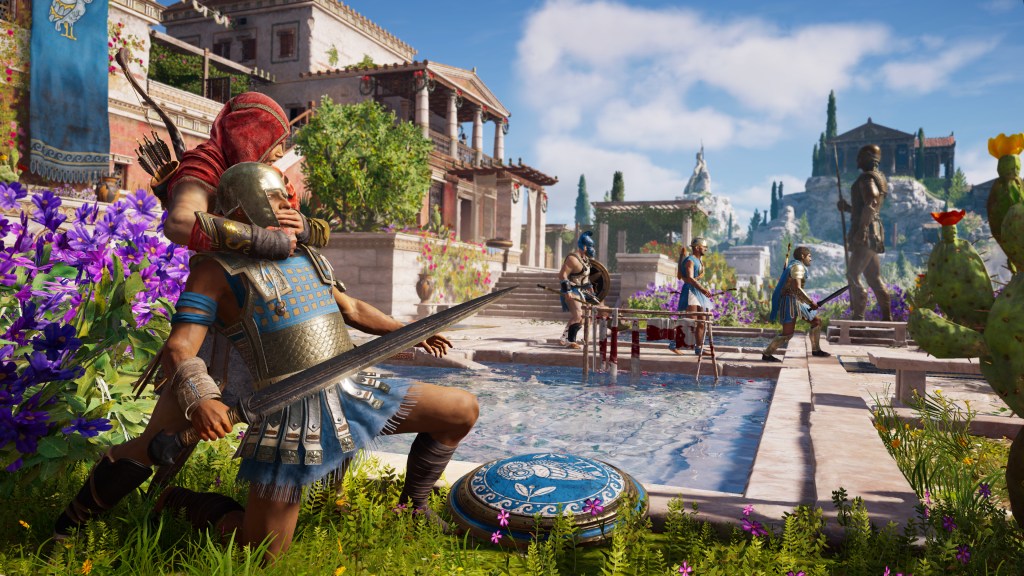Assassin’s Creed Origins looked gorgeous when it released on October 27, 2017. The game featured better animations for character models and environments, more impressive draw distances, a more capable lighting system, and much more to make the Ptolemaic Kingdom of Egypt feel truly alive. Assassin’s Creed Odyssey‘s Greece, by comparison, is much more lively and vibrant than Origins‘ Egpyt, and a recent comparison video displays the beauty Ubisoft is crafting in its latest Assassin’s Creed entry.
We first see the legendary synchronization animation, where both protagonists’ owls circulate the premises, giving a real birdseye view of both game’s maps. Origins is decrepit, brown and gray, desolate – it looks like a perpetual sandstorm or like the world has been slathered in dirt. Odyssey is blinding, lush, bright – it looks like someone attached a Brita filter to Origins and Odyssey is what came out. When comparing the two game’s city streets, Origins‘ roads look like the road Cersei Lannister walked when Unella was screaming “shame!” at her. Odyssey, with flower petals abound, looks exactly like you’d expect: pristine, flamboyant, eccentric – much like the Greeks themselves. That’s not to say Assassin’s Creed Origins is a grotesque wasteland when compared to Assassin’s Creed Odyssey: The two games just focus on two different histories, with Odyssey following a few hundred years after Origins.
Origins recounts – not with 100 percent accuracy – the rule of Ptolemaic Kingdom, a nation in Egypt ruled by Ptolemaic Dynasty that began with Ptolemy I Soter (367 BC – 283/2 BC) and ended with Cleopatra VII Philopator (69 BC – 30 BC). Ptolemy XIII Theos Philopator (62/61 BC – 47 BC) grew jealous of his sister Cleopatra becoming the face of the Egyptian people and, in a spat of anger and childish reaction, decided to force his sister out in order to become Egypt’s sole dominatrix. It wasn’t enough to have the cake; he wanted to eat it, too. This inner family turmoil incited distrust and war eventually broke out, with Egypt essentially being cut in half: one half fighting for (or forced to fight for, rather) Ptolemy XIII and the other half fighting for Cleopatra VII. This wartorn period is where Assassin’s Creed Origins‘ dejected and dreary aesthetic comes from. Assassin’s Creed Odyssey, by comparison, retells the story of the Peloponnesian War (431–404 BC), a time of philosophical inquiry, extravagance and opulence, and unmitigated fornication. We’ll have to wait and see what Odyssey‘s context is in relation to the history that inspired it, though.
Check out the comparison video above while you wait for Assassin’s Creed Odyssey, which is scheduled to release on October 5, 2018, for PC, PlayStation 4, and Xbox One.








